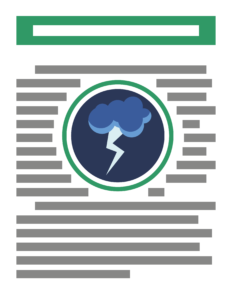Lesson 12: Electric Attractions
Description:
These materials are designed to enhance Chapter 4, Activity 12: Electric Attractions. Youth will connect their knowledge of circuits and magnetism by building and testing an electromagnet.
Focus Questions:
- What is an electromagnet?
- How is the magnetic strength related to the number of wire turns around a nail?
Life Skills:
- Problem Solving
Virtual Assets
Introduction to Electromagnets
Dr. Grant Ellington provides an overview of the activity in Lesson 12 and suggests ways to extend the lesson.
Building an Electromagnet
4-H Agent Shannon Coleman walks viewers through the steps needed to build an electromagnet.
Demonstrating an Electromagnet
Dr. Grant Ellington provides an overview of the activity in Lesson 12 and suggests ways to extend the lesson.
John Travoltage
Help youth visualize static discharge as the movement of negatively charged particles. You can control the simulation from this window. Click in the lower right-hand corner to see it in fullscreen view or see the link below.
PhET Interactive Simulations
University of Colorado Boulder
https://phet.colorado.edu
Visualizing Static Discharge
This activity is structured to help youth use the John Travoltage Simulation to explore static discharge as the movement of negatively charged particles.
Electrostatic Mixed-Up Tapes
Use sticky tape to detect electrostatic charges. Note: Each activity in this lab builds on the one prior. You may not want youth to complete all of the activities in the Electrostatic Mixed-Up Tapes lab, but any activities they do attempt should be done in order.
Lesson 13: Sense the Circuit
Description:
These materials are designed to enhance Chapter 4, Activity 13: Sense the Current. Youth will build and test a galvanometer to detect the presence of an electrical current.
Focus Questions:
- What is a magnetic field?
- How does a galvanometer work?
Life Skills:
- Problem-solving
Virtual Assets
Introduction
Dr. Grant Ellington provides an overview of the activity in Lesson 13.
Using a Galvenometer
Dr. Grant Ellington demonstrates how to use a homemade galvanometer to detect electric current using magnetic fields.
Ideas for Extending the Lesson
Dr. Grant Ellington demonstrates ways to extend the activity using a toggle switch and a clamp-on amp meter.
Lesson 14: Make it Spin
Description:
These materials are designed to enhance Chapter 4, Activity 14: Make It Spin Youth will build and test an electric motor.
Focus Questions:
- What makes the rotor turn?
- How can electromagnetism be used to do useful work?
Life Skills:
- Problem Solving
- Marketable/Useful Skills
Virtual Assets
Introduction
4-H Agent Shannon Coleman provides an overview of the activity in Lesson 14.
Materials
4-H Agent Shannon Coleman demonstrates the materials needed to build a homemade motor.
Building the Circuit
4-H Agent Shannon Coleman demonstrates how to attach wires to a battery in order to build a motor.
Building the Rotor
4-H Agent Shannon Coleman demonstrates how to build a wire rotor to complete the circuit.
Troubleshooting
4-H Agent Shannon Coleman demonstrates how to complete the motor and addresses common problems that might arise.
This curriculum is produced by National 4-H and can be located at shop4-h.org. The activities on this page are designed to enhance and work with the curriculum, they are not a substitute for the book content.


